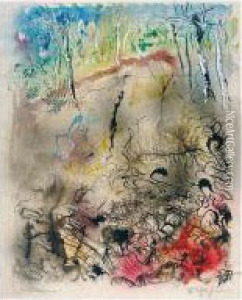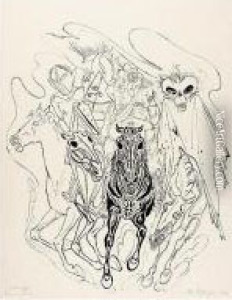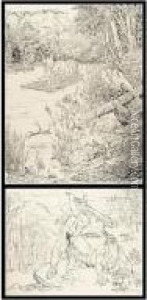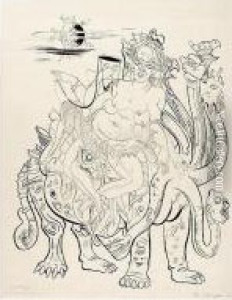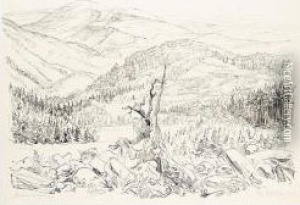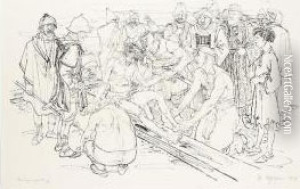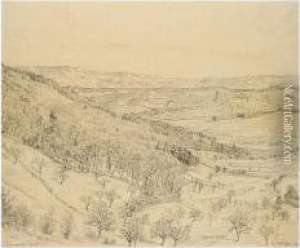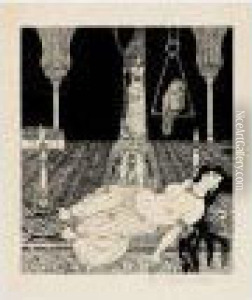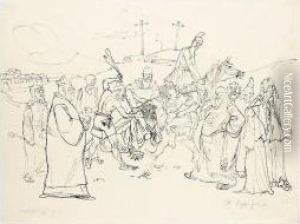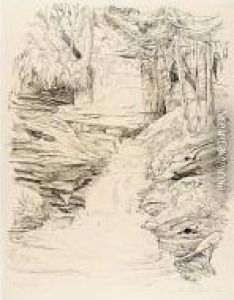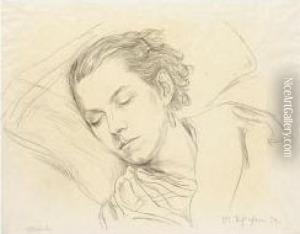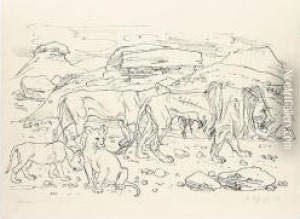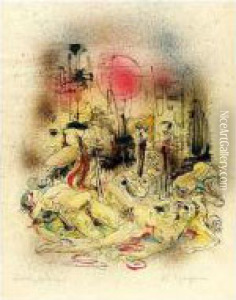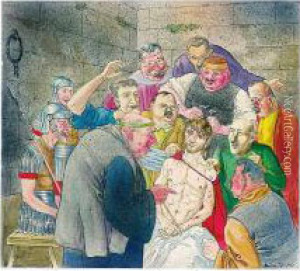Rudolf Schlichter Paintings
Rudolf Schlichter was a German artist, born on December 6, 1890, in Calw, Württemberg. He is most notably recognized for his work during the Weimar Republic period, where he was an active participant in the Dada movement and later associated with the New Objectivity (Neue Sachlichkeit) movement. Schlichter's early life was marked by his education at the School of Applied Arts in Stuttgart and subsequent studies at the Academy of Fine Arts in Karlsruhe.
After serving in the army during World War I, Schlichter settled in Berlin, where he became deeply involved in the city's avant-garde art scene. His experiences during the war profoundly influenced his artistic direction, leading to a critical and often cynical view of society that he expressed through his work. Schlichter's art often depicted the decadence and social decay of Berlin during the 1920s and 1930s, capturing the zeitgeist of the Weimar era with raw and poignant imagery.
He was friends with fellow artists such as George Grosz and Otto Dix, who shared his critical stance towards the establishment and bourgeois values. Schlichter contributed to various exhibitions and was also involved in publishing satirical magazines, which were a popular medium for dissent and political commentary during that time.
With the rise of the Nazi regime, Schlichter's work came under scrutiny due to its political nature and its association with the now-condemned Weimar culture. He faced persecution, and some of his works were labeled as 'degenerate art' by the Nazis and were removed from museums or destroyed. During this period, he had to adapt his style and subject matter to avoid further conflict with the authorities.
After World War II, Schlichter attempted to revive his career but struggled to gain the same level of recognition he had enjoyed during the Weimar Republic. His post-war work included landscapes and religious themes, which marked a departure from his earlier, more provocative work.
Rudolf Schlichter passed away on May 3, 1955, in Munich. Despite the challenges he faced throughout his lifetime, including censorship and changing political tides, Schlichter remains a significant figure in the history of German art, particularly for his contributions to the Dada and New Objectivity movements. His work continues to be studied and exhibited, offering a compelling window into the turbulent social and political landscape of early 20th-century Germany.
